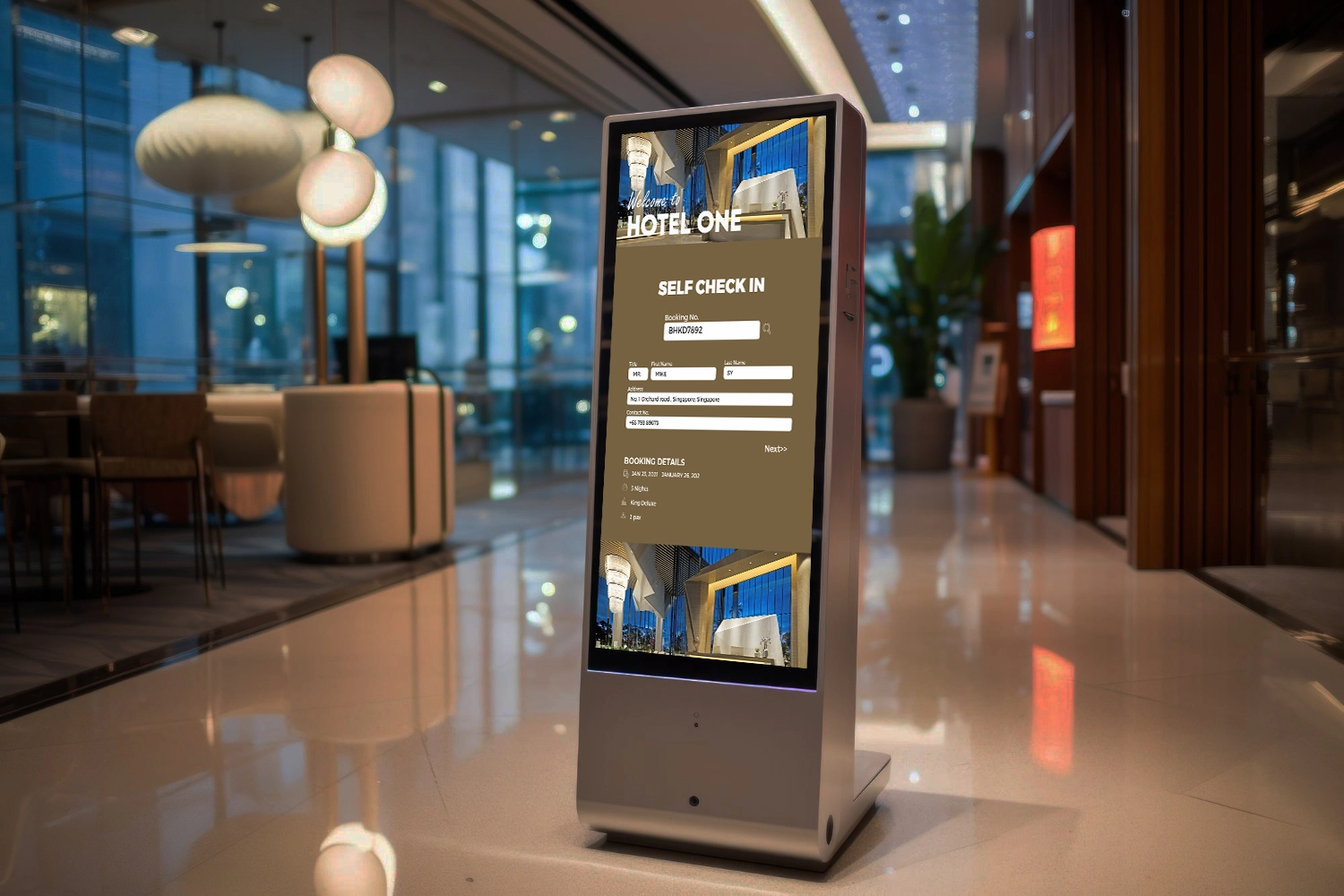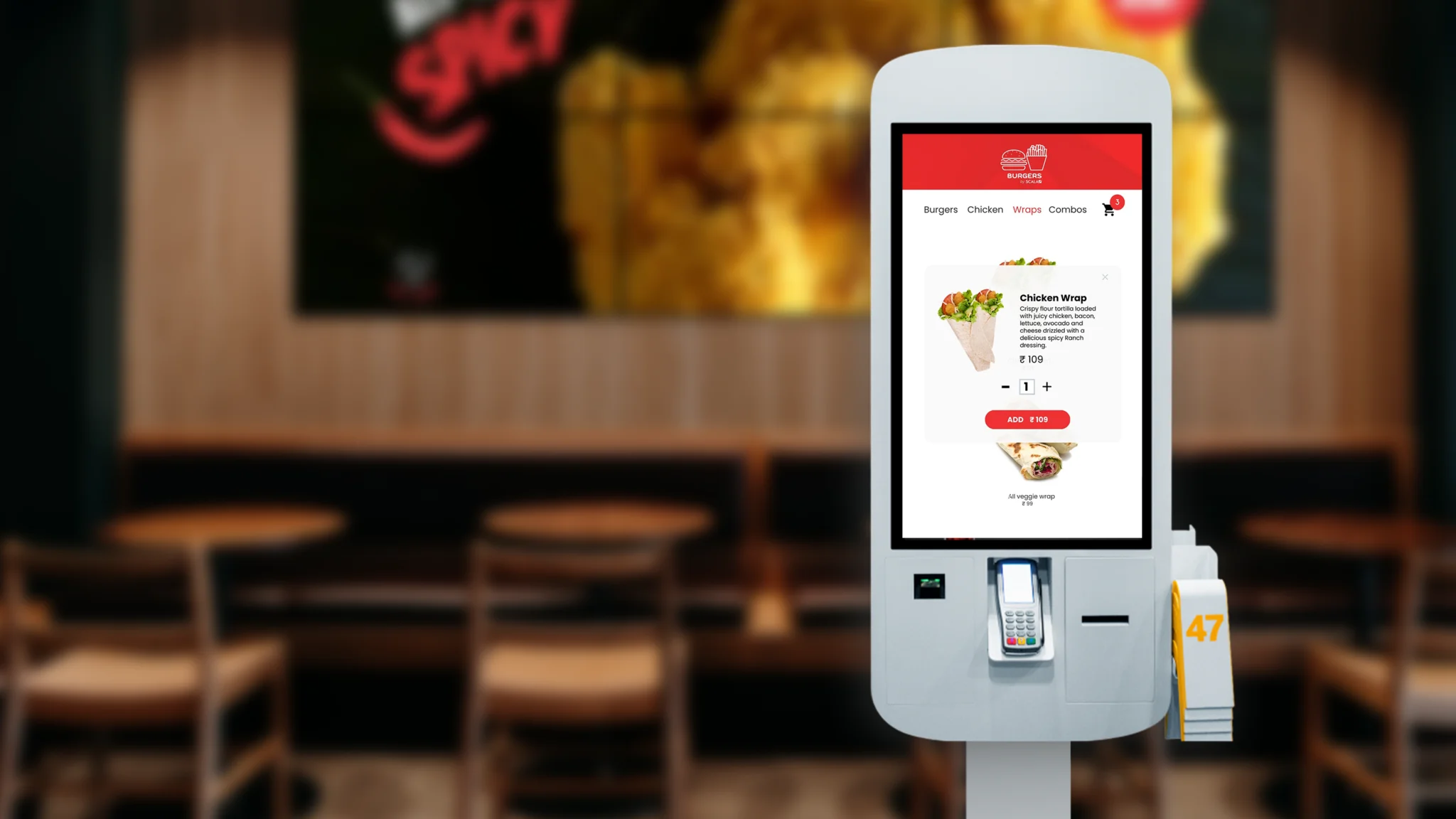How Self-Service Digital Kiosks Are Changing the Face of Customer Service in Asia-Pacific
by Jasdeep Kohli
How Self-Service Digital Kiosks Are Changing the Face of Customer Service in Asia-Pacific
by Jasdeep Kohli

A snapshot of the self-service digital kiosk market
The APAC Self-Service Technology market has been witnessing significant growth. Here are some key insights:
● The self-service technology is broadly divided into three categories, including vending machines, ATMs and self-service kiosks.
● Self-service kiosks can be further segmented into the following categories: food self-ordering kiosks, retail kiosks, parking kiosks, electric vehicle charging kiosks, interactive patient kiosks for healthcare, information kiosks, employment kiosks and check-in kiosks.
● In 2019, the self-service kiosk market was valued at US$ 2,311.40 million and is projected to reach US$ 5,349.56 million by 2027 with a CAGR of 11.3% during the forecast period from 2020 to 2027.
● Australia, China, India, Japan, and South Korea are the major economies driving growth of the market in the Asia-Pacific region.
The endless potential of self-service kiosks
Self-service kiosks are transforming customer experiences across various industries, offering interactive and contactless experiences through digital kiosks and interactive screens. In addition to enabling digital payment, self-service kiosks fulfill a broad range of other service functions, and advancements in voice, facial, gesture, and biometric technology are contributing to a completely touchless self-service experience.

1. Convenience and efficiency
Self-service kiosks offer unparalleled convenience in any customer service setting because they place control of transactions into the hands of customers, allowing them to drive their own purchase and service experiences at their own pace. They enable customers to quickly complete tasks such as ordering food, paying for groceries and other retail goods, checking in for flights and paying bills without waiting in long queues. In a fast-paced world, time-saving solutions are highly valued, and digital kiosks fit the bill perfectly.
2. Contactless interactions
The pandemic accelerated the demand for contactless services, and it shows no signs of slowing. Digital kiosks equipped with touchless tech like QR codes, facial recognition and gesture-based interactions provide a safe way for customers to interact and undertake transactions without physical contact. Whether it’s scanning QR codes for menus or making cashless payments, touchless self-service kiosks play a role in minimising health risks.
3. Versatility and customisation
From touchscreen menus at restaurants to self-checkout counters in supermarkets, self-service kiosks can be customised to suit specific business needs. With the right UI and UX design and smart technical services solutions, businesses can create seamless integration between point of sale and inventory systems, banking systems and other transactional systems to offer a fully integrated digital self-service experience for customers. Kiosks can adapt seamlessly to many different contexts, allowing businesses to enhance efficiency and tailor experiences for their customers.

4. Payment innovations
Digital kiosks have transformed payment processes. Customers can now pay using mobile devices, smart watches, credit cards, mobile wallets, or even cryptocurrencies. Digital payment kiosks integrate with various payment gateways, making transactions smoother and more secure than ever before.
5. Multilingual support
In the diverse APAC region, language diversity is a challenge. Self-service kiosks address this by offering multilingual interfaces. Whether in Tokyo, Mumbai, Shanghai or Sydney, customers can navigate interactive kiosks in their preferred language, making them a highly accessible solution for diverse populations.
6. Data insights
Kiosks have huge potential for collecting valuable data on customer behaviour. Businesses can analyse this data to understand customer preferences, peak periods for business and popular products. Insights gleaned from kiosk interactions inform strategic decisions and improve overall operations.
7. Digital out-of-home and targeted advertising
Beyond functionality, digital self-service kiosks create strong opportunities, for targeted, relevant digital advertising. Advertisers can display targeted content to captive audiences waiting in queues and undertaking transactions. From promoting new products to sharing public service announcements, kiosks amplify brand visibility.
Challenges ahead for the self-service kiosk market
While the growth of self-service kiosks is promising, there are some challenges that remain. Maintenance, security, and ensuring seamless integration with existing systems are critical considerations. Businesses must take the time to consider how kiosks can best be integrated with existing systems to avoid technical and service issues and maximise the user experience. Further, for industries such as banking and healthcare where information and data security is of the utmost importance, security needs to be watertight to assure customers of the safety of their personal data. Finally, user education is essential to maximise adoption.
Conclusion
The APAC region is at the forefront of self-service kiosk adoption. As technology evolves, we can expect even more innovative kiosk solutions. From smart city initiatives to enhancing customer experiences, self-service kiosks are here to stay and are reshaping the way customers interact with businesses and services. Their growth in APAC reflects a dynamic shift toward efficiency, convenience, and safety. As we embrace this digital revolution, let’s keep an eye on the exciting developments in this space.
Discover Scala solutions and start the journey towards transforming your customer experience today: http://apac.scala.com/sg/solutions/
About the Author:
Jasdeep Kohli,




